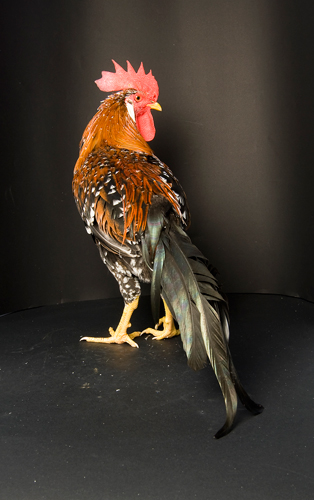Anconas might be glamorous Italian fowls but they have a secret more people should know about – they’re pretty good layers as well as very good lookers.
Ancona are attractive fowls that produce lots of lovely large white-shelled eggs. They tend to be kept mainly by show exhibitors but they are ideal as a purebred layer for backyards or hobby farms.
Ticks all boxes
It is surprising Anconas are not better known as a roadtest shows they tick all the right boxes. They are robust and hardy, suit most climates and adjust to confinement in small pens as well as thriving on free-range conditions. Smart observant fowls, they are economical eaters because of their moderate size, they come into lay early and, although very active by nature, they can be quietened to become family pets.
Poor relations
So how come you haven’t heard of the Ancona breed before? They have usually played second fiddle to their well-known cousin, the Leghorn. While the two breeds share general similarities, Anconas are a little smaller, they are quieter natured and cost much less to keep. The Leghorn comes in a greater range of colours but nothing as unusual as the stunning Ancona plumage.
Pure glamour
The traditional Ancona has black plumage with a beetle-green sheen, each feather finished at the tip with white. This must be in a V-shape and creates an eye-catching effect. In recent times a variety has been developed where red replaces the black on the feathering, which is very pretty against the contrasting white tips. Some people prefer this colour, others don’t think it is a patch on the stunning traditional plumage.
If you’re buying an Ancona, aside from feather colour and pattern, look for yellow legs that are mottled with black, red comb and wattles and a white earlobe. Most males have an upright, single comb with five to seven even serrations; on the females the comb folds daintily over one side of the face but should not obscure the eye. A rose comb is also acceptable.
Italian origin
If you are wondering about the origin of Anconas, their homeland is Italy. This hardy regional fowl was named in honour of a seaport, Ancona, which is on the Adriatic coastline.
Choice of size
The large Ancona is of moderate size, expect 2–2.25kg in a pullet and 2.25–2.50 in a hen. You may prefer the bantam form, which is less than a third of the size of large fowl.
Get them young
The main challenge with this breed is getting birds when young and handling them so they are confident and quiet. They make great children’s pets, but if they are allowed to grow up in a flock and are rarely handled, they become flighty and highly-strung. Gentle handling and a few treats works wonders with this breed.
Summary:
Breed: Ancona (large and bantam)
Temperament: lively, responds to handling
Cost: varies with age and quality; chicks start around $6.50, adult females $25-$70, good show quality $70-$100
Lifespan: 5-6 years
Eggs per year: pullets 180-220, hens 120 or less
Maintenance: easy-care but inclined to be flighty
Recommended for: some experience helpful but not essential



